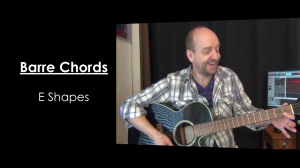
Barre Chords in E Shape - Root on 6th String
This lesson is an introduction to barre chords.
Learn Major, Minor and Dominant 7 barre chords in the E Shape.
Difficulty: Advanced beginner
Lesson Length: 8:45
Instructor: George Goodman
* Barre Chords
* Major Barre Chords
* Minor Barre Chords
* Dominant 7th Barre Chords
Barre Chords Based on E Chords
Barre/Bar Chords
Barre can be spelled b-a-r-r-e or just bar and bar chords are also known as moveable chords. What the bar refers to is the technique of fretting more than one string with a single finger.
We first saw a bar chord when we learned the simple F major chord where the first finger bars the first and second strings with the first finger.
Major Bar Chords
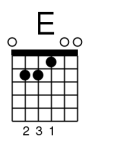
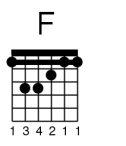
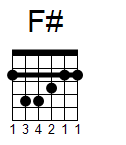

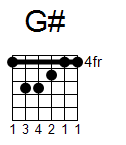
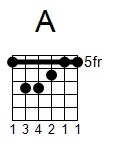
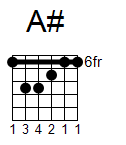
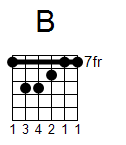
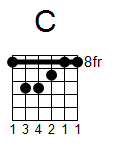
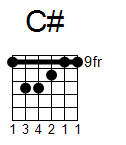
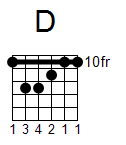

Let’s start by looking at the chord E Major. This is typically formed with 1-1-3 (1st finger-1st fret-3rd string); 2-2-5; 3-2-4. This ties up our first finger though so we can’t use it to form a bar so let’s form the E major chord like this: 2-1-3; 3-2-5; 4-2-4.
Now if we take this E major chord and move it up the neck by a fret and put a bar across the entire first fret with our first finger, effectively replacing the nut with our finger, we have raised the pitch of the entire chord by a semi-tone and are now playing the chord F Major. F is a semi-tone above E. This is the more complex version of the chord F major.
The root of the chord, the note F is sounded on the 6th string. So in this case, 1st fret, 6th string is the note F.
For all of the chords in this lesson, this will be the case where the root note is found on the 6th string.
Now let’s move the whole chord up another fret or semi-tone from F to F#. Here the bar is on the 2nd fret. 2nd fret, sixth string sounds F#.
G major is formed when the bar is on the 3rd string.
With the bar on the 4th fret is G# or Ab Major.
The rest of the chords can be seen in their respective chord diagram above.
Minor Bar Chords
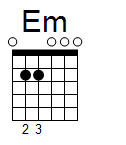

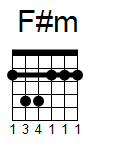

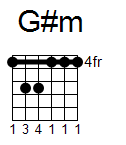


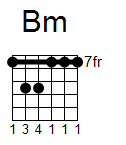
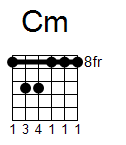

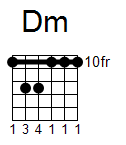
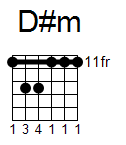
We can also do the same thing with the open E minor chord. Form Em with 3-2-5; 4-2-4. Then move it up a fret and bar the entire first fret with your first finger. Now we have F minor. Every time we move up a fret we move up a semi-tone. Here’s F# minor with the bar on the 2nd fret, Gm on the 3rd, G#m on the 4th fret, Am on the 5th, A#m on the 6th fret, Bm on the 7th, Cm on the 8th, C#m on the 9th fret, Dm on the 10th, D#m on the 11th, and back to Em on the 12th.
Dominant 7th Bar Chords
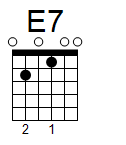
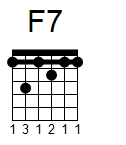
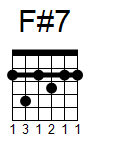

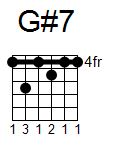


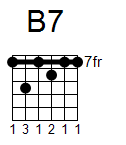
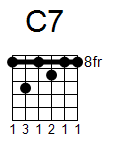
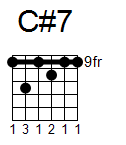
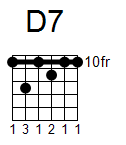
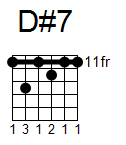
Now let’s look at dominant 7th chords built off the E7 format.
Here’s E7: 1-1-4; 2-2-5. Now instead form it with 2-1-4; 3-2-5. Now move it up a fret, bar the first fret with your first finger and you have F dominant 7 or F7.
Same thing now goes. Move up to the second fret, F#7; third fret, G7; fourth fret, G#7; fifth fret, A7; sixth fret, A#7; 7th fret, B7; 8th fret, C7; 9th fret, C#7; 10th fret, D7; 11th fret D#7 and finally E7 up on the 12th fret.

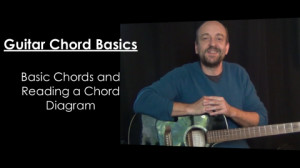
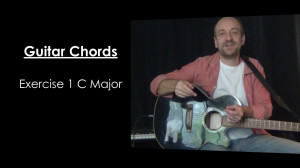
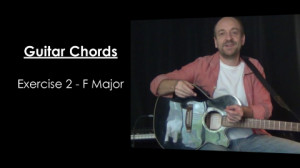

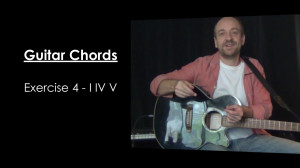
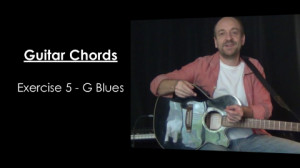
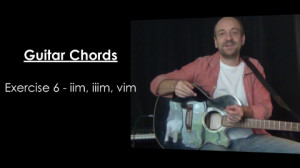
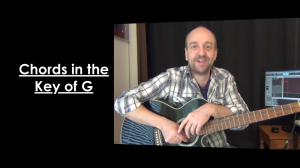
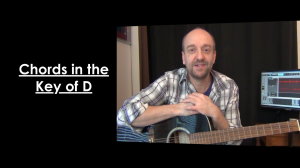
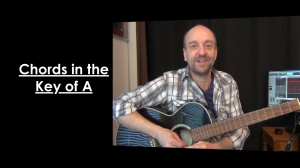
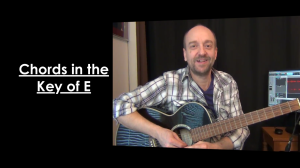


Leave a Reply